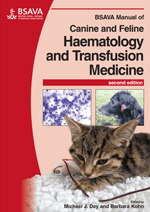
Full text loading...

Rodenticides are one of the most common pesticide ingested by companion animals, with dogs being poisoned more commonly than cats. This chapter looks at role of vitamin K in haemostasis; anticoagulant rodenticides; exposure and clinical signs; diagnosis; management and prognosis.
Anticoagulant rodenticide intoxication, Page 1 of 1
< Previous page | Next page > /docserver/preview/fulltext/10.22233/9781905319732/9781905319732.29-1.gif

Full text loading...





